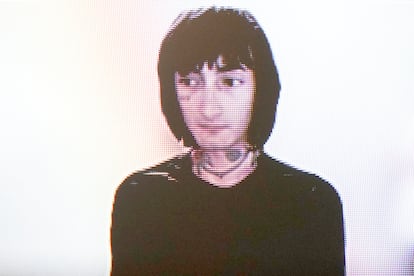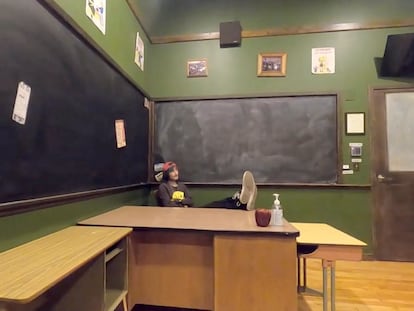Highland Park gunman had threatened to kill his own family
Robert E. Crimo III had two encounters with law enforcement in 2019, yet was still able to legally purchase firearms in Illinois


Neither the relatively strict weapons legislation of the state of Illinois nor the express threat of ending his entire family’s lives were enough to deactivate the potential threat posed by Robert E. Crimo III, the 21-year-old who killed six people on Monday (one more died at the hospital the next day) at an Independence Day parade in Highland Park, a wealthy Chicago suburb.
The attack was premeditated and planned “over several weeks,” according to Lake County Major Crime Task Force spokesperson Chris Covelli. Crimo fired up to 70 rounds from a rooftop with a high-precision rifle, then walked back into the crowd, dressed as a woman and wearing makeup to conceal his neck tattoos. A self-styled rapper, for months he had been posting dozens of videos with violent and disturbing images.
As in the case of the Buffalo (New York) killer, who also made his intentions explicit on the internet, security protocols failed again. The investigation is focusing on how Crimo was able to legally purchase five weapons, including the one he used on Monday, despite two encounters with law enforcement in 2019: the first time for attempted suicide; the second after threatening to “kill everyone” in his family. Not even the so-called red flag law, which allows a judge to disarm a person with violent tendencies and prevent them from buying new weapons, worked in this case.
During his escape, Crimo was apparently contemplating a second attack in Madison, Wisconsin, about 100 kilometers from Highland Park, according to a police spokesperson. He faces a possible life sentence after being charged with seven counts of firs-degree murder and many more charges likely to follow from injured individuals.
The young man appeared this Wednesday before a court in a video conference from prison and confessed to being the perpetrator of the massacre. He showed no remorse when the judges described the scene or named the deceased, including the parents of a two-year-old child.
Local police insisted that Crimo’s exact motives for opening fire on the crowd are still unknown. Covelli said there was no indication that the crime was “racially motivated, motivated by religion, or any other protected status.”
Tu suscripción se está usando en otro dispositivo
¿Quieres añadir otro usuario a tu suscripción?
Si continúas leyendo en este dispositivo, no se podrá leer en el otro.
FlechaTu suscripción se está usando en otro dispositivo y solo puedes acceder a EL PAÍS desde un dispositivo a la vez.
Si quieres compartir tu cuenta, cambia tu suscripción a la modalidad Premium, así podrás añadir otro usuario. Cada uno accederá con su propia cuenta de email, lo que os permitirá personalizar vuestra experiencia en EL PAÍS.
¿Tienes una suscripción de empresa? Accede aquí para contratar más cuentas.
En el caso de no saber quién está usando tu cuenta, te recomendamos cambiar tu contraseña aquí.
Si decides continuar compartiendo tu cuenta, este mensaje se mostrará en tu dispositivo y en el de la otra persona que está usando tu cuenta de forma indefinida, afectando a tu experiencia de lectura. Puedes consultar aquí los términos y condiciones de la suscripción digital.
More information
Archived In
Últimas noticias
Most viewed
- Reinhard Genzel, Nobel laureate in physics: ‘One-minute videos will never give you the truth’
- Oona Chaplin: ‘I told James Cameron that I was living in a treehouse and starting a permaculture project with a friend’
- Pablo Escobar’s hippos: A serious environmental problem, 40 years on
- Why we lost the habit of sleeping in two segments and how that changed our sense of time
- Chevy Chase, the beloved comedian who was a monster off camera: ‘Not everyone hated him, just the people who’ve worked with him’










































